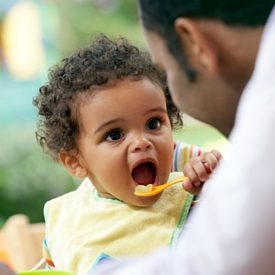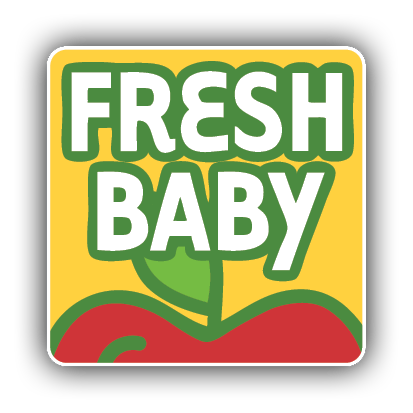
Baby food can be served cool, at room temperature, or slightly warmed. Always test the temperature of food before feeding it to your baby. If you use a microwave to warm food, stir the food thoroughly before testing the temperature.
When you first start feeding your baby, your baby may push more food out of her mouth than what is swallowed. There is no need to get discouraged. Your baby is simply learning what to do with food when it goes into his mouth. Before you know it, she will get comfortable with eating. If she is having a tough time, try mixing baby food with breast milk or infant formula. The familiar taste may help her associate new foods with a flavor she likes.
Your baby will look forward to mealtime! Plan on sitting with him and offering food for about 20 minutes at each meal. It is okay if your baby does not finish his food. Sometimes he will eat a lot, sometimes only a little. Don’t panic, this is normal. Your baby will let you know when he is done—common signs that he will give you to let you know he is done eating include:
- Pushing the spoon away
- Playing with his food
- Spitting food out
- Turning his head away
Choking can occur when your baby is introduced to solid foods. Protect your baby from choking by:
- Always supervising him while eating.
- Feeding him only when he is secure in a high chair or sitting on your lap.
- Not allowing him to crawl or walk around while eating or drinking.
- Avoiding foods that are likely to cause choking.
Hunger Cues:
- Reaching for food
- Pointing at food
- Get’s excited when food is presented
Cues Baby is Full:
- Head turning
- Pushing spoon away
- Spitting food out
- Playing with food
Helpful Feeding Gear:
- Microwave-Safe Plastic Bowl
- Baby spoon with soft tip and long handle
- Feeding bib
- Paper towels or wash cloth


